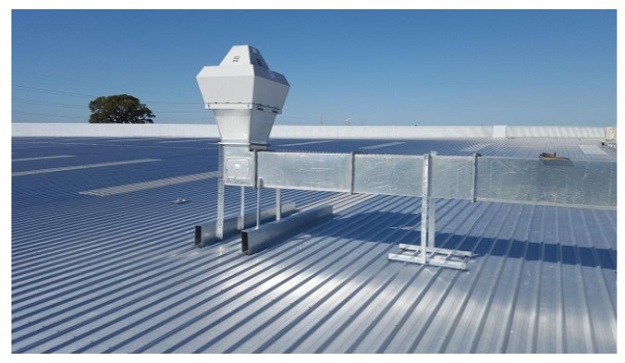Cooler weather is here in many parts of the U.S., and you may find yourself with new Heating, Ventilation, and Air Conditioning (HVAC) projects—particularly, heating.
For large-scale HVAC projects, coming up with a detailed and accurate cost estimate is key to successful bidding.
As a construction cost estimator, the more your cost estimates can reflect the real price of a project, the better it is for you and your client; both parties will have proper insight before deciding to move forward.
That said, cost estimation does come with its fair share of challenges—but if you learn how to get by them, you will be one step ahead of the game.
Challenges in Construction Cost Estimation
It’s easy to fall behind on the newest technology trends. Many professionals in the construction industry still rely on traditional, manual methods for large-scale HVAC projects regarding cost estimates. Unless you possess outstanding organizational skills, managing the information for cost estimates can be tedious, overwhelming, and frustrating.
Finding detailed prices to determine costs can be time-consuming—and also, you might find yourself using outdated data that doesn’t reflect current market prices. That said, using such data to draw cost estimates can lead to disastrous results for a project. If you’re also the project builder, you might have to restitute costs for unforeseen expenses. This is a scenario you probably dread, and it’s clear why.
Fortunately, those problems are now a thing of the past. Cloud-based cost estimation software that uses live data is slowly replacing traditional methods. Such software programs can group your costs all in one single database, allowing you optimal management. For instance, in one project, you can estimate the costs per square foot, per subcontractor, and per mechanical system. That said, the live data feature allows you to use accurate prices so that your estimate can be as precise as possible.
Environmental Comfort
HVAC systems, aside from installation work, require subcontractors who specialize in the trade are also the ones who determine the type of HVAC system the building requires. They also establish whether the project will have any specific requirements. In this case, you—the estimator—would have to draw the HVAC costs in its separate group.
On their part, the HVAC subcontractor is responsible for providing the project estimator with the necessary details. These include a precise breakdown of the various components of the HVAC system, as well as service fees.
HVAC Expenses
Even though the HVAC subcontractor provides a detailed description of the system, you should know what information the cost estimate needs to include.
For large-scale projects, the costs associated with HVAC systems should include the various components such as ductwork, furnaces, air conditioners, heat pumps, air diffusers, and air handling units. Also, keep in mind several factors may influence the cost. Typically, those are the size of the project, labor, materials, and job complexity. In many cases, the estimate may also include operational and maintenance costs. Finally, you may need to add additional fees that are indirectly associated with the installation of an HVAC system (specialized equipment used for the installation, building permits, energy).
To better organize your costs, you can break down the HVAC systems into three groups. While they may share some similarities, they each have specific requirements that can influence your final cost estimate. To make sure you don’t forget any information, you should calculate prices using HVAC controls estimating software to ensure your estimation is as detailed—and accurate—as possible:
Heating– The price for heating systems should include elements such as furnaces, gauges, valves, and expansion tanks. Keep in mind the brand or type required are also factors that influence the cost.
Ventilation– Some of the most common expenses for ventilation systems include fans, grilles, registers, louvers (for industrial projects), filters, dust collectors, dampers, and silencers.
Air Conditioning– The components for air conditioning systems should, at the very least, list the costs for items such as dehumidifiers, mixing boxes, panel filters, condenser, motors, compressors, expansion valves, thermostats, refrigerants, and cooling coils.
Don’t Miss-
The Best Soundproof Air Conditioning Unit Reviews
Tips on Home Maintenance – Mclean Heating and Ventilation Repair
Keep Your Cost Estimates Organized
As you can see, coming up with a cost estimate for installing an HVAC system entails a lot of information and attention to detail.
Make sure you don’t leave anything behind. If you’re an estimator struggling with traditional methods, a shift to the digital age might be the smart move in this case.
Finding ways to improve your cost estimation methods will not help you keep your costs organized, but it will save you lots of time—and perhaps give you peace of mind. As a result, you will be able to bid for future projects with confidence, knowing you did the job right.

